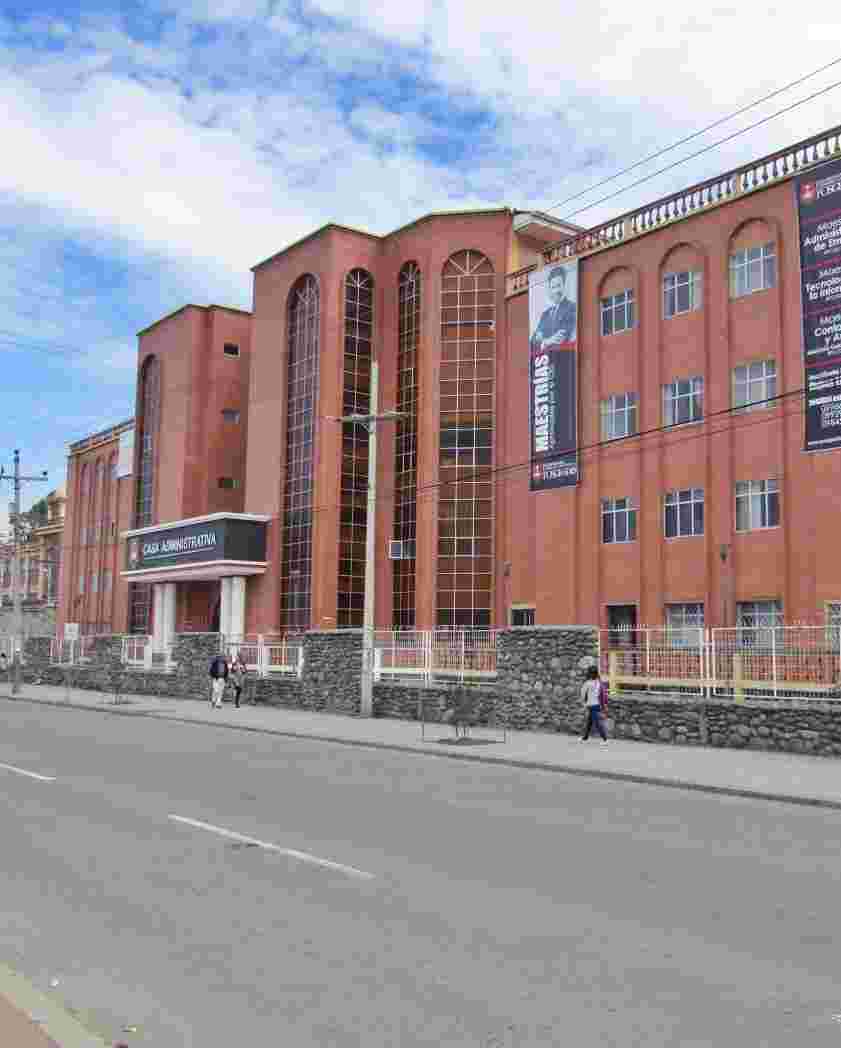Análisis de vulnerabilidades y riesgos, tres casos de estudio de viviendas patrimoniales, aplicando el estudio de Impactos Ambientales en el Austro del Ecuador
| dc.contributor.advisor | Aguirre Ullauri, María del Cisne | |
| dc.contributor.author | Andrade Quintuña, Iván Mauricio | |
| dc.contributor.cedula | 106834955 | es_ES |
| dc.coverage | Cuenca – Ecuador | es_ES |
| dc.date.accessioned | 2020-08-13T17:28:00Z | |
| dc.date.available | 2020-08-13T17:28:00Z | |
| dc.date.issued | 2019 | |
| dc.description | El patrimonio arquitectónico representa gran parte de la historia del país, conformando la identidad y el legado de una ciudad. Frente a esto, se presenta la necesidad de conservar la permanencia de edificaciones patrimoniales, que en gran parte se ven afectadas por agentes climáticos, causando deterioro a su estado físico de conservación. Esto motiva a realizar el análisis de vulnerabilidad y riesgos en el patrimonio arquitectónico, articulado otras ramas de investigación con metodologías que se utilizan en los Impactos Ambientales, para realizar el análisis de lesiones y afecciones de edificaciones. \n\nEl análisis interdisciplinar entre la Conservación del Patrimonio y el estudio de Impactos Ambientales, mediante la aplicación de la Matriz de Leopold, permite la identificación de factores que causan deterioro, por lo cual la investigación aplicada en tres casos de estudio ubicadas en las ciudades de Cuenca, Cañar y Loja, que presentan características similares de contexto y características morfológicas, evalúa concretamente la incidencia de los factores y la repercusión a nivel material de manera comparativa. \n\nLos resultados del estudio conjuntamente con la interpretación crítica del bien indican que, los principales factores de deterioro son, la incidencia solar, precipitación, usos y otros. Sobre estos, se evidencian fisuras en mampostería de tierra, desprendimiento de empaste, mánculas de polvo en revestimientos de pintura, decoloración de madera, en carpinterías y teja artesanal. A partir de la Metodología de Leopold, dichas lesiones indican que en el caso de Cuenca, Cañar y Loja la valoración del análisis ambiental está en nivel severo. Determinados los resultados las medidas preventivas para la conservación se basa en la documentación realizada por el Instituto Nacional de Patrimonio Cultural -INPC-, el Consejo Internacional de Museos -ICOM- y el Ministerio de Cultura y Patrimonio -MCyP-. | es_ES |
| dc.description.resumen | The architectural heritage represents a large part of the history of the country, shaping the identity and legacy of a city. Faced to it, there is a need to preserve the permanence of heritage buildings, which are largely affected by weather agents of the environment, causing deterioration to their physical state of conservation. It motivates the analysis of vulnerability and risks in the architectural heritage, articulated with other branches of research such as Environmental Impacts, to perform the analysis of injuries and conditions of buildings. \n\nThe interdisciplinary analysis between the Conservation of the Heritage and the study of Environmental Impacts, through the application of the Leopold Matrix, allows the identification of factors that cause deterioration, for which the applied research in three studies cases located in the cities of Cuenca , Cañar and Loja, which present similar characteristics of context, morphological characteristics and weather conditions, specifically assesses the incidence of factors and the material impact in a comparative manner. \n\nThe results of the study together with the critical interpretation of the good indicate that the main factors of deterioration are the solar incidence, environmental contamination and uses. On these, cracks in ground masonry, detachment of impasto, dust particles in paint coatings, discoloration of wood, carpentry and tile artisan are evident. Based on the Environmental Assessment, these injuries indicate that in the case of Cuenca, Cañar and Loja, the assessment of the environmental analysis is at a severe level. Determined results preventive measures for conservation are determined in the documentation made by the National Institute of Cultural Heritage -INPC-, the International Council of Museums -ICOM- and the Ministry of Culture and Heritage -MCyP-. | es_ES |
| dc.format | application/pdf | es_ES |
| dc.format.extent | xii, 141 páginas | es_ES |
| dc.identifier.other | 5BT2019-TA1 | |
| dc.identifier.uri | https://dspace.ucacue.edu.ec/handle/ucacue/1154 | |
| dc.language.iso | spa | es_ES |
| dc.publisher | Universidad Católica de Cuenca. Carrera de Arquitectura | es_ES |
| dc.rights | Atribución 4.0 Internacional | |
| dc.rights | info:eu-repo/semantics/openAccess | es_ES |
| dc.rights.uri | http://creativecommons.org/licenses/by/4.0/deed.es | |
| dc.source | Universidad Católica de Cuenca | es_ES |
| dc.source | Repositorio Institucional - UCACUE | es_ES |
| dc.subject | Arquitectura Patrimonial | es_ES |
| dc.subject | Impactos Ambientales | es_ES |
| dc.subject | Materiales De Construcción | es_ES |
| dc.subject | Matriz De Leopold | es_ES |
| dc.title | Análisis de vulnerabilidades y riesgos, tres casos de estudio de viviendas patrimoniales, aplicando el estudio de Impactos Ambientales en el Austro del Ecuador | es_ES |
| dc.type | info:eu-repo/semantics/bachelorThesis | es_ES |
| dc.type | info:eu-repo/semantics/publishedVersion | es_ES |
| thesis.degree.discipline | Carrera de Arquitectura | es_ES |
| thesis.degree.level | Título Profesional | es_ES |
Archivos
Bloque original
1 - 1 de 1
Cargando...
- Nombre:
- ANDRA Q. IVAN M..pdf
- Tamaño:
- 7.67 MB
- Formato:
- Adobe Portable Document Format




